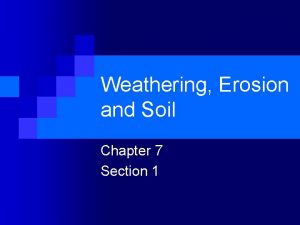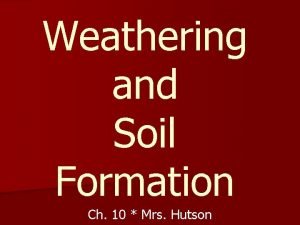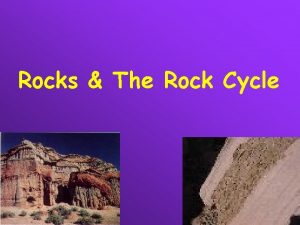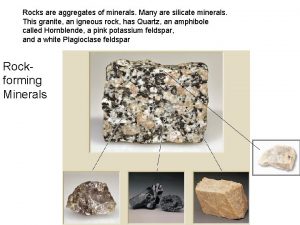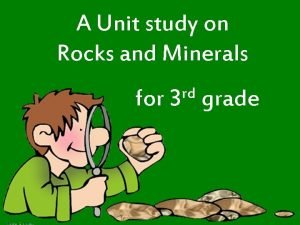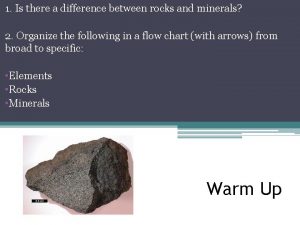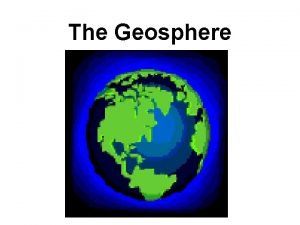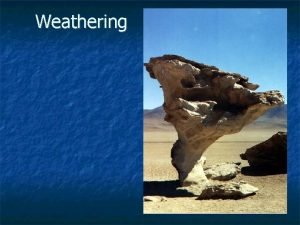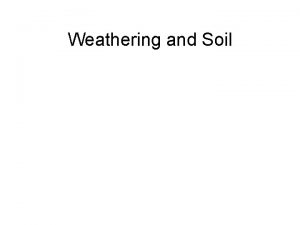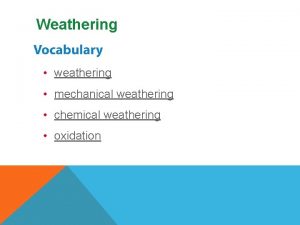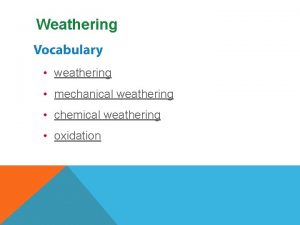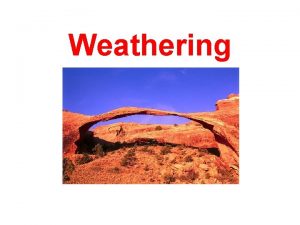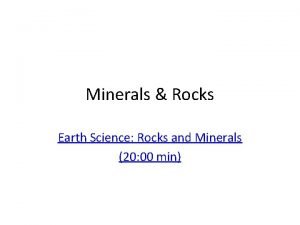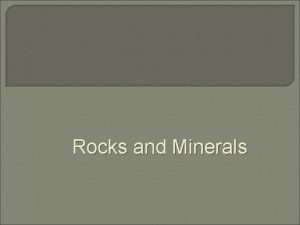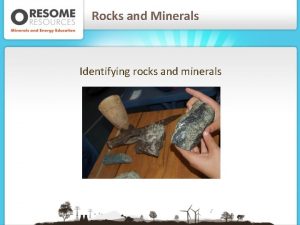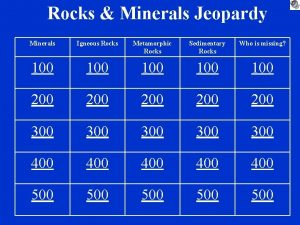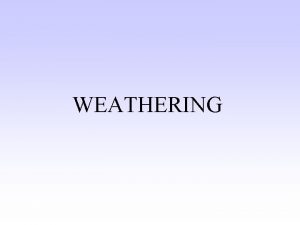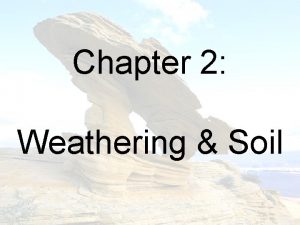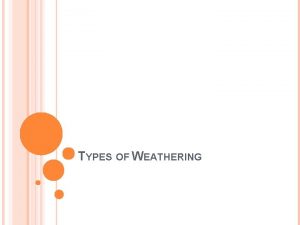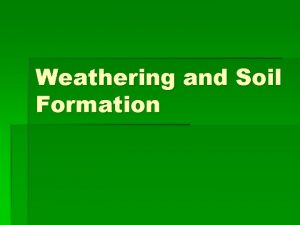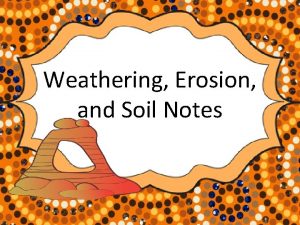Earth Science Chapter 2 Weathering Soil Minerals Rocks















- Slides: 15

Earth Science Chapter 2 Weathering & Soil

Minerals & Rocks are made up of Minerals. n Minerals are: – Naturally occurring – Inorganic – Solid – Definite chemical composition – Specific Crystalline shape n

3 Types of Rocks n Igneous n Sedimentary n Metamorphic The Rock Cycle

The Rock Cycle

Igneous Rocks – cooled molten material n Intrusive – molten material cooled beneath the Earth’s surface n Extrusive – molten rock cooled on Earth surface – – – Slow cooling Large crystals Granite – Rapid cooling – Small or no crystals – Obsidian, basalt

Sedimentary – broken pieces from erosion & weathering Formed from sediments being compacted, cemented or precipitated from solutions n Sandstone, limestone, conglomerate n

Metamorphic – heat & pressure formed n Foliated & nonfoliated – Foliated – layered n “cooked” in Earth’s interior – Can change igneous, sedimentary or even previously formed metamorphic rocks – (igneous) Granite Gneiss (foliated) – (sedimentary) limestone marble (nonfoliated)

Metamorphic Rock

Weathering n The breaking of rock into smaller & smaller pieces – Mechanical – wind, freezing, abrasion, release of pressure, plant & animal actions – Chemical – water dissolves, oxidation (rusting), plants secrete acid, pollution (acid rain) n Affected by the surface area of the rock exposed to the weathering process

Mechanical Weathering

Chemical Weathering n Alters the chemical makeup of the rock – – – Oxidation – “rusting”; oxygen reacts Hydrolysis – dissolving minerals Carbonic acid –”acid rain – extra CO 2 in atmosphere mixes w/ H 2 O to form a weak acid. – Plants – secrete weak acids to break down rock.

Soil Formation n n Soil is the loose, weathered material on Earth's surface in which plants can grow. It is a mixture of rock particles, minerals, decayed organics (humus) , air & water. Bedrock is the solid layer of rock beneath the soil. Soil forms as bedrock is weathered & mixes w/ organics & materials. As soils form, it develops “layers” layers called horizons Each horizon is named w/ letters (O, A, B & C) C down to the bedrock. Soil texture determined by the size of the particles making up the soil.

Soil Textures: Sand, Silt & Clay n n Gravel: > 2 mm Sand: . 05 -2. 0 mm Silt: . 002 -. 05 mm Clay: <. 002 mm Soil w/ equal parts of sand, silt and clay is called a “loam”

Soil Horizons n Soil Horizon Names and Descriptions: O: Decaying plants on or near surface A: Top Soil, Organic Rich B: Subsoil, Most Diverse Horizon and the Horizon with the most sub classifications C: Weathered/aged parent material

Life in the Soil
 Types of igneous rock
Types of igneous rock Igneous rocks metamorphic rocks and sedimentary rocks
Igneous rocks metamorphic rocks and sedimentary rocks Chapter 7 weathering erosion and soil
Chapter 7 weathering erosion and soil Mechanical and chemical weathering venn diagram
Mechanical and chemical weathering venn diagram Rock vs mineral
Rock vs mineral Rocks are aggregates of minerals
Rocks are aggregates of minerals Song about igneous rocks
Song about igneous rocks Rocks
Rocks Difference between minerals and rocks
Difference between minerals and rocks Type of rock concept map
Type of rock concept map Suzanna socked me sunday poem
Suzanna socked me sunday poem Difference between rock and stone
Difference between rock and stone Rocks and minerals
Rocks and minerals Minerals in the soil
Minerals in the soil Physical weathering and chemical weathering venn diagram
Physical weathering and chemical weathering venn diagram What is weathering explain the types of weathering
What is weathering explain the types of weathering


